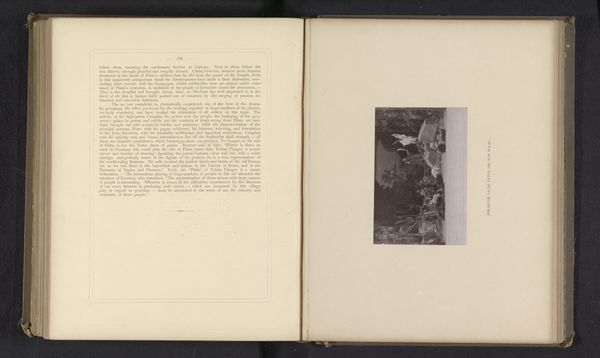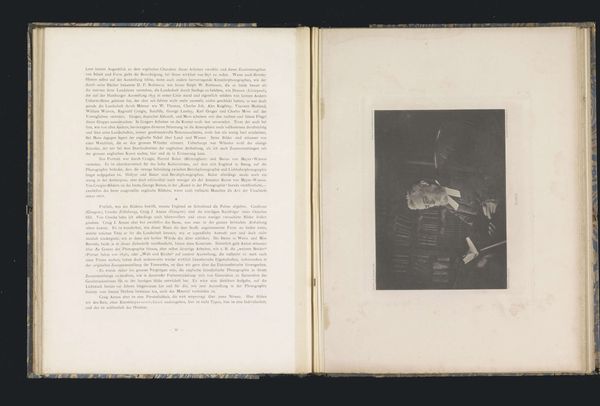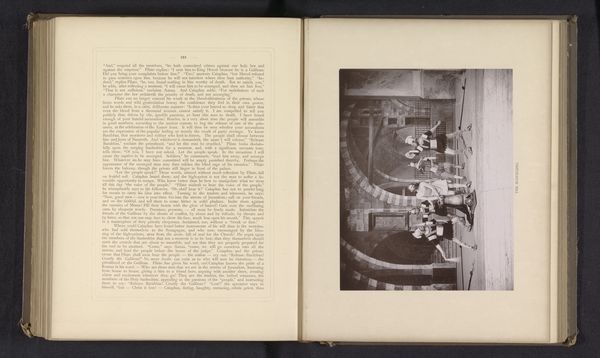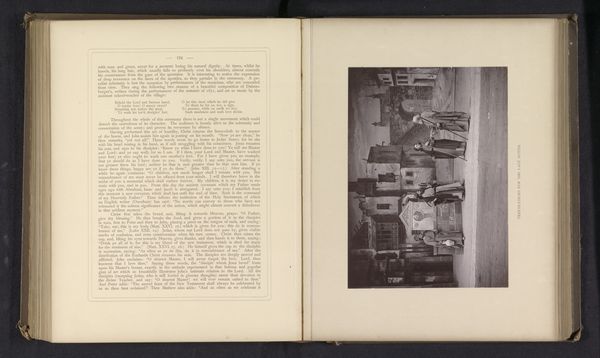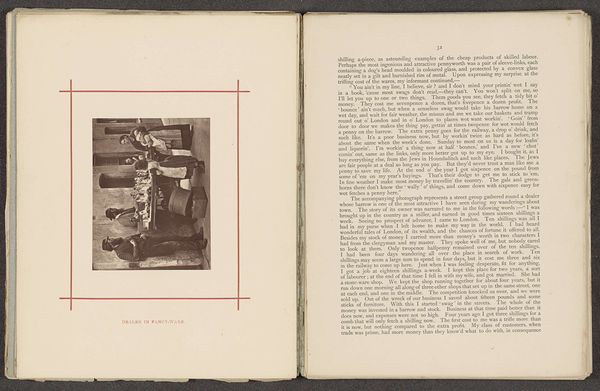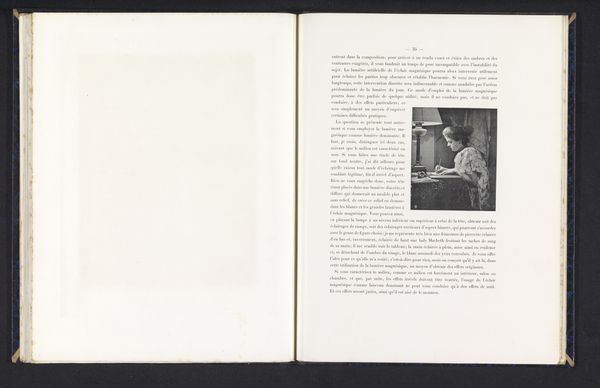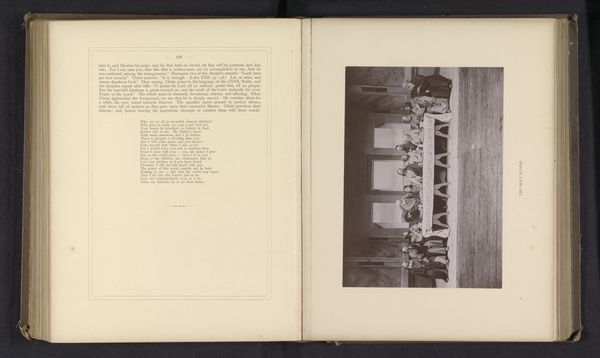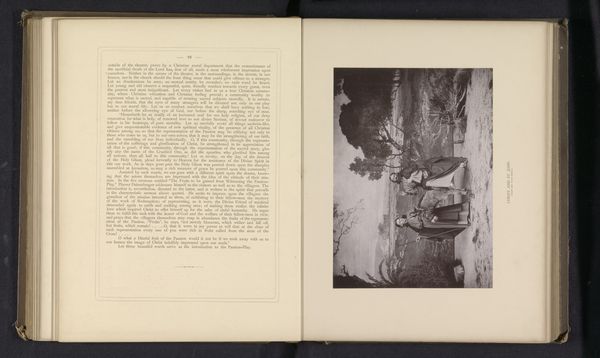
print, photography, collotype, engraving
# print
#
photography
#
collotype
#
history-painting
#
engraving
Dimensions: height 96 mm, width 142 mm
Copyright: Rijks Museum: Open Domain
Curator: Here we have "The Redemption: Adoration of the Cross" by Carl Stockmann, believed to have been created before 1890. It's a rather striking piece rendered through collotype and engraving techniques, producing this interesting print. What are your first thoughts? Editor: My initial impression is one of somber reverence. The grayscale and somewhat blurred details create a sense of historical distance, but also intimacy. There's a quiet drama in the scene. What particularly grabs my eye is the textures produced via the means of collotype on this engraving. How this technique helped define the social implications of prints? Curator: Absolutely, we need to think about the period's religious and social landscape. This adoration of the cross speaks volumes about the period's complex relationship between faith, power, and the societal expectations placed upon different groups of people at the time. Also, how were gender roles or social status presented or subverted in visual art such as this one. Editor: Let's delve into that intersection of process and message. The layering inherent in engraving combined with the reproducibility of collotype points to wider accessibility. Was it intentionally aimed at reaching beyond elite circles? Was this a challenge to traditionally valued unique artwork? Was the choice of producing art using 'lesser' or lowlier processes such as this an indicator of resistance or change during the making? Curator: It is also crucial to remember that within the depicted image and symbol is fraught with both comfort and subjugation, especially concerning marginalized groups. To really engage with it critically, it's important that the materials employed, print production techniques, were used to address religious themes, or reinforce colonial agendas. Editor: Looking at it this way shows the relationship between materials, labor, and the work's place in the wider market—that the value resided not just in the image but in its dissemination, affecting accessibility. The print here reflects and shapes belief in its social sphere. Curator: Considering the context adds complexity and nuances to it. I am always fascinated when artistic depictions become windows into political ideas. It reveals this tension we keep hitting when religion, race, labor, class and politics intermingle. Editor: It brings us back to materiality and reception. Stockmann made use of both photography and printing press so the labor and circulation of his ideas could move, to build what may now look like traditional imagery, yet was circulated among many. Curator: Well, understanding these interwoven strands transforms our viewing. Thank you, I appreciate that perspective as a vital lens. Editor: And likewise—reflecting on materials in this instance helps the social context of "The Redemption" truly stand out.
Comments
No comments
Be the first to comment and join the conversation on the ultimate creative platform.

